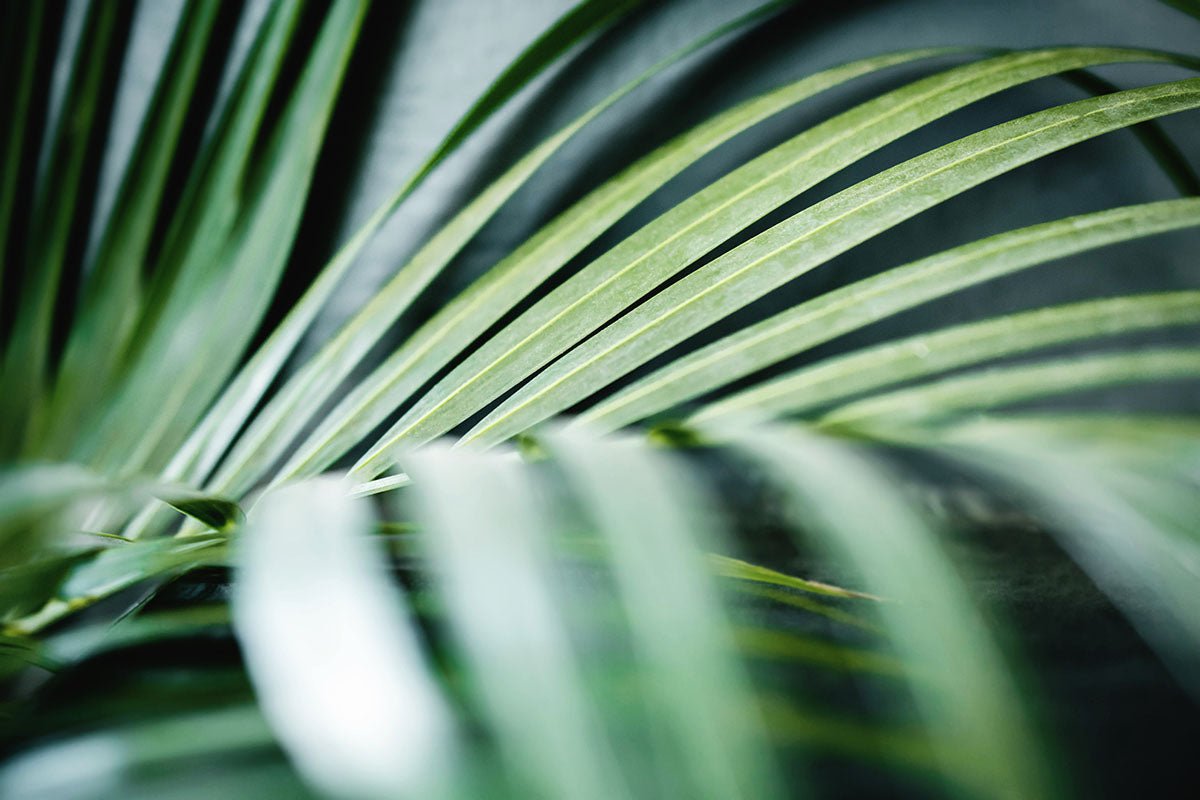Indoor plants have evolved beyond mere decoration; they've become a lifestyle. The sight of lush greenery can magically transform any living space into a serene oasis, adding both visual appeal and a myriad of health benefits. Among the myriad of indoor plant options, houseplant palms stand out as the ideal choice for creating an indoor tropical paradise. In this article, we'll take you on a journey through the world of houseplant palms, helping you identify the perfect palms to turn your living space into a lush and vibrant haven.
Table of Contents
- Introduction
- Why Opt for Houseplant Palms?
-
Varieties of Houseplant Palms
- Areca Palm (Dypsis lutescens)
- Ponytail Palm (Beaucarnea recurvata)
- Sago Palm (Cycas revoluta)
- Parlor Palm (Chamaedorea elegans)
-
Caring for Your Houseplant Palms
- Light and Positioning
- Watering and Humidity
- Soil and Fertilizing
- Pruning and Maintenance
-
Benefits of Houseplant Palms
- Air Purification
- Stress Reduction
- Enhanced Focus and Productivity
- Aesthetic Enhancement
- Selecting the Ideal Palms for Your Space
-
Infusing Tropical Vibes into Your Home
- Stylish Planters and Pots
- Complementary Companion Plants
-
Common Challenges and How to Overcome Them
- Dealing with Brown Tips and Edges
- Combatting Pest Infestations
- Addressing Yellowing Fronds
- Conclusion
- Frequently Asked Questions (FAQs)
Introduction
Imagine entering your home and being greeted by a lush, verdant landscape that transports you to a tropical haven. Houseplants have an uncanny ability to metamorphose any living space into a haven of tranquility, providing not just visual delight but also contributing to your overall well-being. Among the numerous options available, houseplant palms have gained immense popularity due to their grace, adaptability, and their gift of serenity.
Why Opt for Houseplant Palms?
Houseplant palms offer a unique fusion of beauty and practicality, making them an impeccable choice for both seasoned plant aficionados and novices. With their distinct feathery fronds and towering elegance, they infuse an exotic touch into any setting, creating an instant escape from the daily hustle and bustle.
Varieties of Houseplant Palms
Areca Palm (Dypsis lutescens)

The Areca Palm, often referred to as the Butterfly Palm, boasts gracefully arching fronds and a feathery appearance. Not only does it add aesthetic charm, but it's also renowned for its air-purifying properties and relatively undemanding care regimen.
Ponytail Palm (Beaucarnea recurvata)

The Ponytail Palm, known for its unique bulbous trunk and cascading long, narrow leaves, is a captivating addition to any indoor space. Its distinctive appearance and low-maintenance requirements make it a favorite among plant enthusiasts.
Sago Palm (Cycas revoluta)

The Sago Palm, with its striking crown of dark green, feather-like fronds, exudes an ancient charm. Despite its name, it's not a true palm but a cycad, and its robust nature adds an element of timelessness to your indoor oasis.
Parlor Palm (Chamaedorea elegans)

The Parlor Palm, characterized by its delicate, fan-shaped fronds, imparts an aura of elegance to any room. Perfect for those seeking a compact palm that flourishes even in low-light conditions.

Caring for Your Houseplant Palms
Light and Positioning
Proper placement is pivotal for the well-being of your houseplant palms. Most palm varieties thrive in bright, indirect light, steering clear of direct sunlight that could scorch their leaves.
Watering and Humidity
Striking the right balance between watering and humidity is paramount. Palms generally prefer consistently moist soil, but overwatering or allowing them to sit in waterlogged conditions can be detrimental.
Soil and Fertilizing
Well-draining soil is a prerequisite for healthy palm growth. During the growing season, applying a balanced liquid fertilizer can promote vibrant fronds and robust development.
Pruning and Maintenance
Regularly trimming yellow or brown fronds is essential for upkeeping the palm's appearance. Additionally, periodic leaf dusting ensures proper breathing and optimal sunlight absorption.

Benefits of Houseplant Palms
Air Purification
Houseplant palms excel in purifying indoor air by filtering out pollutants and emitting oxygen. This translates to a healthier, more breathable living space.
Stress Reduction
The presence of greenery has been scientifically linked to stress reduction and relaxation. Houseplant palms contribute to a tranquil ambiance, alleviating the strains of modern life.
Enhanced Focus and Productivity
Research indicates that indoor plants, including houseplant palms, can bolster concentration and productivity. Their presence fosters a positive and invigorating atmosphere.
Aesthetic Enhancement
Houseplant palms introduce a touch of natural allure to interior settings, elevating the overall visual appeal and forging a seamless connection with the outdoors.

Selecting the Ideal Palms for Your Space
Choosing the right houseplant palm hinges on several factors, including available space, lighting conditions, and personal preferences. Consider the palm's eventual size and growth rate to ensure a harmonious fit within your home.

Infusing Tropical Vibes into Your Home
Amplify the tropical ambiance by pairing your houseplant palms with stylish planters and pots that complement your interior aesthetics. Introducing other indoor plants with similar care requirements creates a cohesive and visually captivating arrangement.

Common Challenges and How to Overcome Them
Dealing with Brown Tips and Edges
Brown tips on palm fronds can result from underwatering, low humidity, or excessive fertilizer application. Adjusting your watering routine and periodically misting the plant can mitigate this issue.
Combatting Pest Infestations
Common pests like spider mites and mealybugs can affect houseplant palms. Regularly inspect your plants and employ natural remedies or insecticidal soap to combat these unwelcome visitors.
Addressing Yellowing Fronds
Yellowing fronds may signify overwatering or inadequate drainage. Adhere to proper watering practices and consider repotting the palm if the soil remains consistently soggy.
Conclusion
Incorporating houseplant palms into your indoor space is a delightful way to craft a serene oasis that rejuvenates your senses and augments your overall well-being. With their grace, air-purifying attributes, and versatility, houseplant palms eloquently celebrate the beauty and benefits of nature within the confines of our homes.
Frequently Asked Questions (FAQs)
1. Can I expose my houseplant palm to direct sunlight? Houseplant palms typically prefer bright, indirect light. While some Houseplant palms typically prefer bright, indirect light. While some varieties can tolerate limited exposure to direct sunlight, it's generally advisable to shield them from harsh rays to prevent leaf scorching.
2. How frequently should I water my houseplant palm? Watering frequency varies based on factors like humidity, temperature, and the specific palm species. Allow the top inch of soil to dry out before watering, and adjust accordingly as you observe your plant's needs.
3. Are houseplant palms safe if I have pets? Most houseplant palms are considered non-toxic to pets, offering peace of mind for households with furry companions. However, it's always wise to monitor your pets' behavior around plants.
4. Can I keep a houseplant palm in a room with minimal natural light? While certain palm varieties can tolerate lower light conditions, they still require some level of indirect light to thrive. Consider placing them near a north-facing window or supplementing with artificial grow lights.
5. How do I rejuvenate a struggling houseplant palm? If your houseplant palm is exhibiting signs of distress, review its care routine. Assess its watering, light, and humidity levels, and make adjustments accordingly. Trimming dead or yellowing fronds can also invigorate its appearance.


